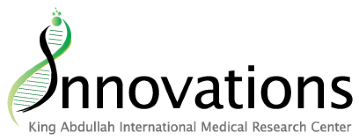
Genetic disorders may influence the choice of the best cancer treatment for a patient.THEKOPMYLIFE / ISTOCK / GETTY IMAGES
Some genetic disorders leave patients more susceptible to developing cancer, and less responsive to standard chemotherapy. A recent case study by an MNG–HA researcher has illustrated the importance of ruling out rare genetic disorders prior to cancer therapy.
Bloom syndrome is a rare genetic disorder caused by a mutation that disrupts DNA repair. This results in chromosomal instability, which manifests with a variety of symptoms including growth retardation, immunodeficiency and cancer susceptibility.
“I work as a consultant in paediatric oncology, and recently an 11-year-old boy arrived in a critical condition with mature B cell lymphoma,” says Wasil Jastaniah of Princess Noorah Oncology Center. “We started him urgently on standard chemotherapy, but he suffered severe side-effects and we had to find an alternative treatment.”
Jastaniah treated the boy with rituximab, an existing therapy designed for children sensitive to conventional chemotherapy. Rituximab had previously been shown to be safe and effectiveagainst mature B cell lymphoma.
“At this point, we had not diagnosed the patient with Bloom syndrome,” says Jastaniah. “He responded well to rituximab-based chemotherapy and went on to make a full recovery from the lymphoma.
The patient was later diagnosed with Bloom syndrome, and Jastaniah realised that successful cancer treatment withrituximab might be a viable option for such patients in the future. To date, there have been no previous studies into the treatment of cancer in patients with Bloom syndrome, and the case reveals promise for future therapies for those with the condition. Jastaniah is keen to highlight the importance of early diagnosis of inherited cancer-predisposing syndromes to optimize surveillance and treatment.
“When a child presenting with cancer also has physical characteristics associated with conditions like Bloom syndrome, such as growth retardation, it is absolutely crucial to rule out genetic factors that might impede cancer treatment,” says Jastaniah. “This case study should also trigger further investigations into cancer treatments in patients withBloom syndrome and similar disorders because data are so limited at present.”
The rarity of these genetic conditions means that individual countries are unlikely to come across many cases. Jastaniah hopes to see the development of an international registry that would help researchers access data regarding cancer management in patients with chromosomal instability.


